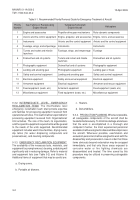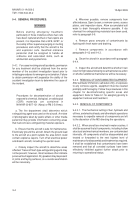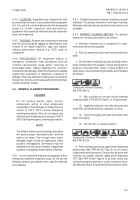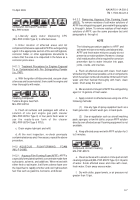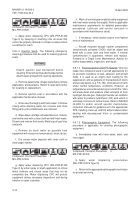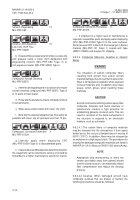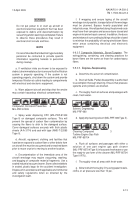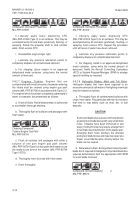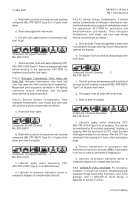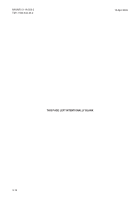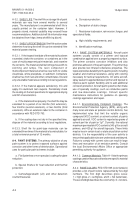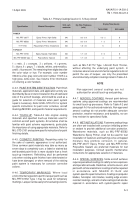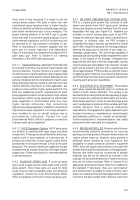TM-1-1500-344-23-2 - Page 166 of 240
9-12
NAVAIR 01-1A-509-2
TM 1-1500-344-23-2
15 April 2009
Solvent, Degreasing
13
MIL-PRF-680
Cleaner, Non-Aqueous,
15
Low VOC, HAP Free,
MIL-PRF-32295
b. Disassemble as required and remove excess oils
and greases using a clean cloth dampened with
degreasing solvent (MIL-PRF-680 Type II) or
non-aqueous cleaner (MIL-PRF-32295 Type I).
Compound, Aircraft Cleaning
2
MIL-PRF-85570
c. Immerse and agitate parts in a solution of one part
aircraft cleaning compound (MIL-PRF-85570 Type II)
in 14 parts of fresh water.
d. Rinse with fresh water to ensure complete removal
of contaminants.
e. Wipe away excess water with clean, dry cloth.
f. Blow dry the cleaned equipment as thoroughly as
possible with clean, dry air pressure less than 10 psi.
Compound, Corrosion Preventive
4
MIL-PRF-81309
g. Liberally apply water displacing CPC
(MIL-PRF-81309 Type II) to disassembled parts.
h. Inspect disassembled parts to determine whether
the equipment can be returned to service or should be
forwarded to a higher maintenance activity for rework.
Compound, Corrosion Preventive
4
MIL-PRF-81309
i. If shipment to a higher level of maintenance is
required, reassemble parts and apply water displacing
CPC (MIL-PRF-81309 Type II) to the outer surfaces.
Permit excess CPC to drain off, then wrap gun in barrier
material (MIL-PRF-131 Class 1) sealed with tape
(AMS-T-22085) and prepare for shipping.
9-8.2.4. Composite Materials, Graphite or Carbon/
Epoxy.
WARNING
The inhalation of carbon composite fibers
resulting from aircraft fires and/or aircraft
material damage may be harmful to personnel.
Wear a full facepiece respirator when exposed
to these materials, and, in addition, wear close
weave cotton gloves when handling these
materials.
CAUTION
Aircraft construction utilizing carbon/epoxy fiber
composite materials and metal structure or
substructure creates a high potential for
establishing galvanic corrosion cells. This can
result in corrosion of the metal components if
the structure is exposed to an electrolyte
medium, such as salt water.
9-8.2.4.1. The carbon fibers of composite materials
may be released into the atmosphere if their epoxy
binder burns; this occurs at temperatures in excess of
600
°
F (316
°
C). In addition, fibers may be released by
an explosion or a high impact crash. The procedures for
treating fire damaged composite materials are listed in
NAVAIR 01-1A-21 (Navy) or TM 55-1500 series (Army).
NOTE
Appropriate ship maneuvering, to direct the
smoke and debris away from parked aircraft
and the island structure, can materially reduce
fiber contamination and reduce the cleanup
process.
9-8.2.4.2. Cleanup. When damaged aircraft have
composite surfaces that are broken or burned, the
following procedures should be followed.
Change 1 - 31 March 2010
Back to Top

